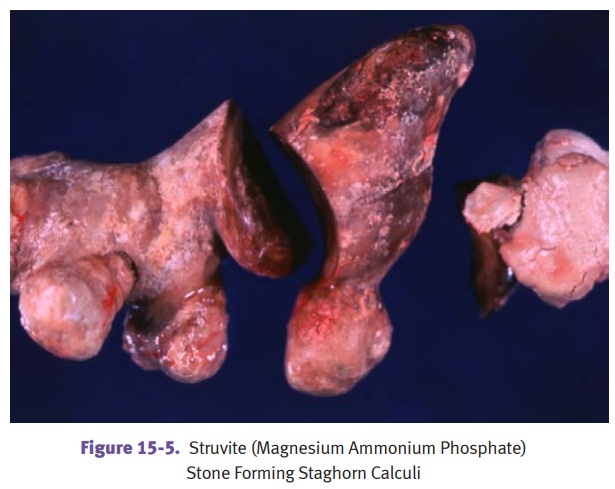Chapter: Pathology: Renal Pathology
Urolithiasis

UROLITHIASIS
Renal calculi occur in up to 6% of the
population; men are affected more often than women.
•
Stone composition. Most (75%) stones are calcium
oxalate stones. Magne-sium ammonium phosphate (“struvite”) stones are
associated with infection by urea-splitting bacteria (proteus), and these
stones often form large staghorn calculi. Uric acid stones are seen in gout,
leukemia, and in patients with acidic urine. Cystine stones are uncommon.

•
Pathology. Most stones are unilateral
stones that are formed in the calyx, pelvis,
and urinary bladder.
•
Clinical features. Calcium stones are radiopaque
and can be seen on x-ray. Renal
colic may occur if small stones pass into the ureters. Stones may cause
hematuria, urinary obstruction, and predispose to infection.
•
Treatment of stones is with lithotripsy or
endoscopic removal.
Related Topics